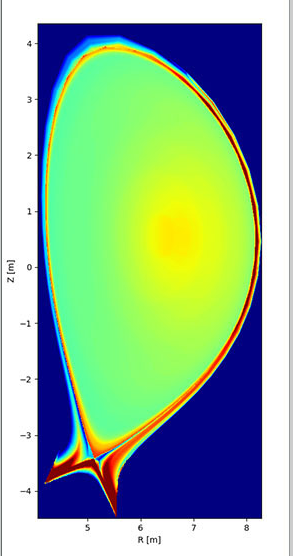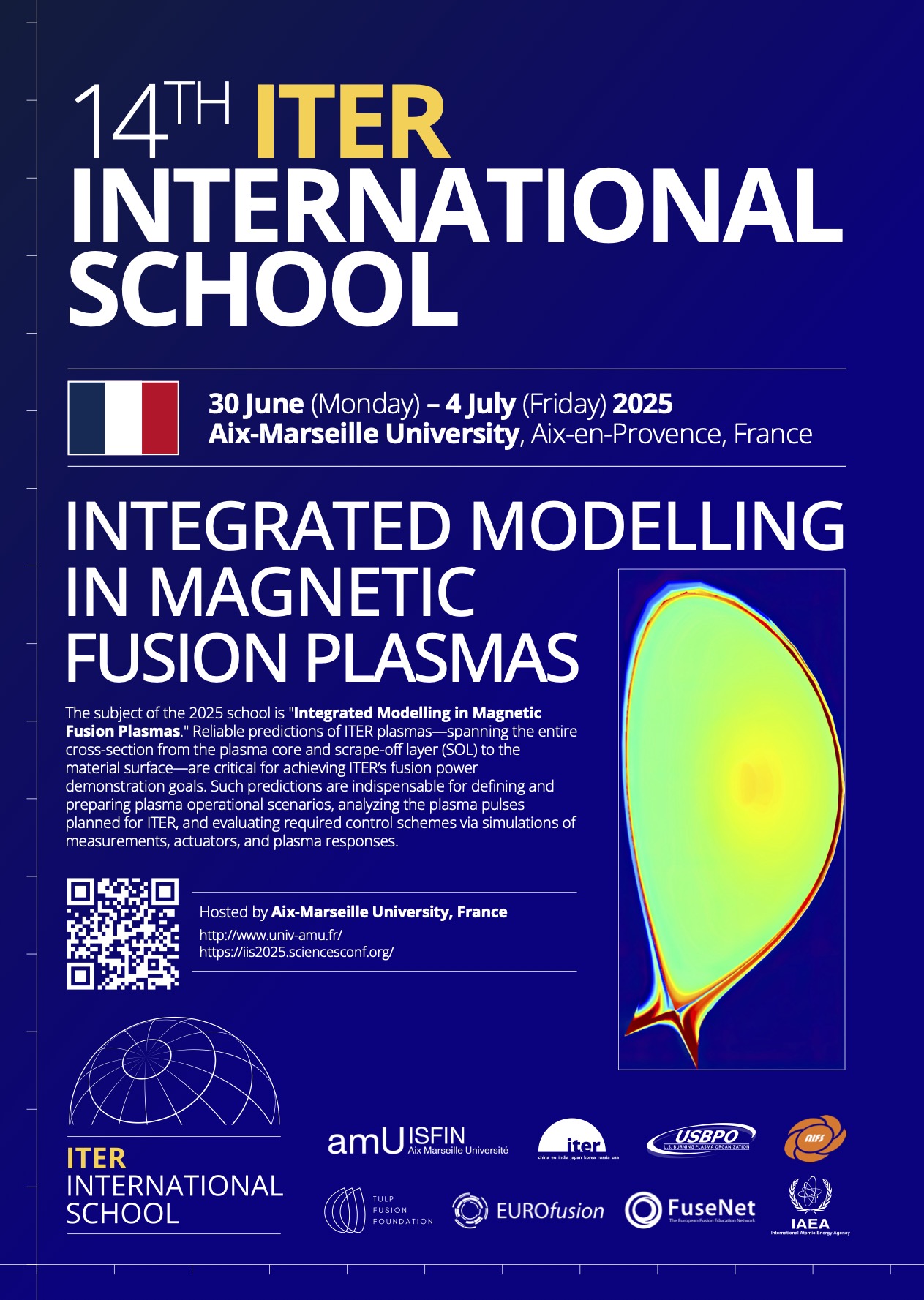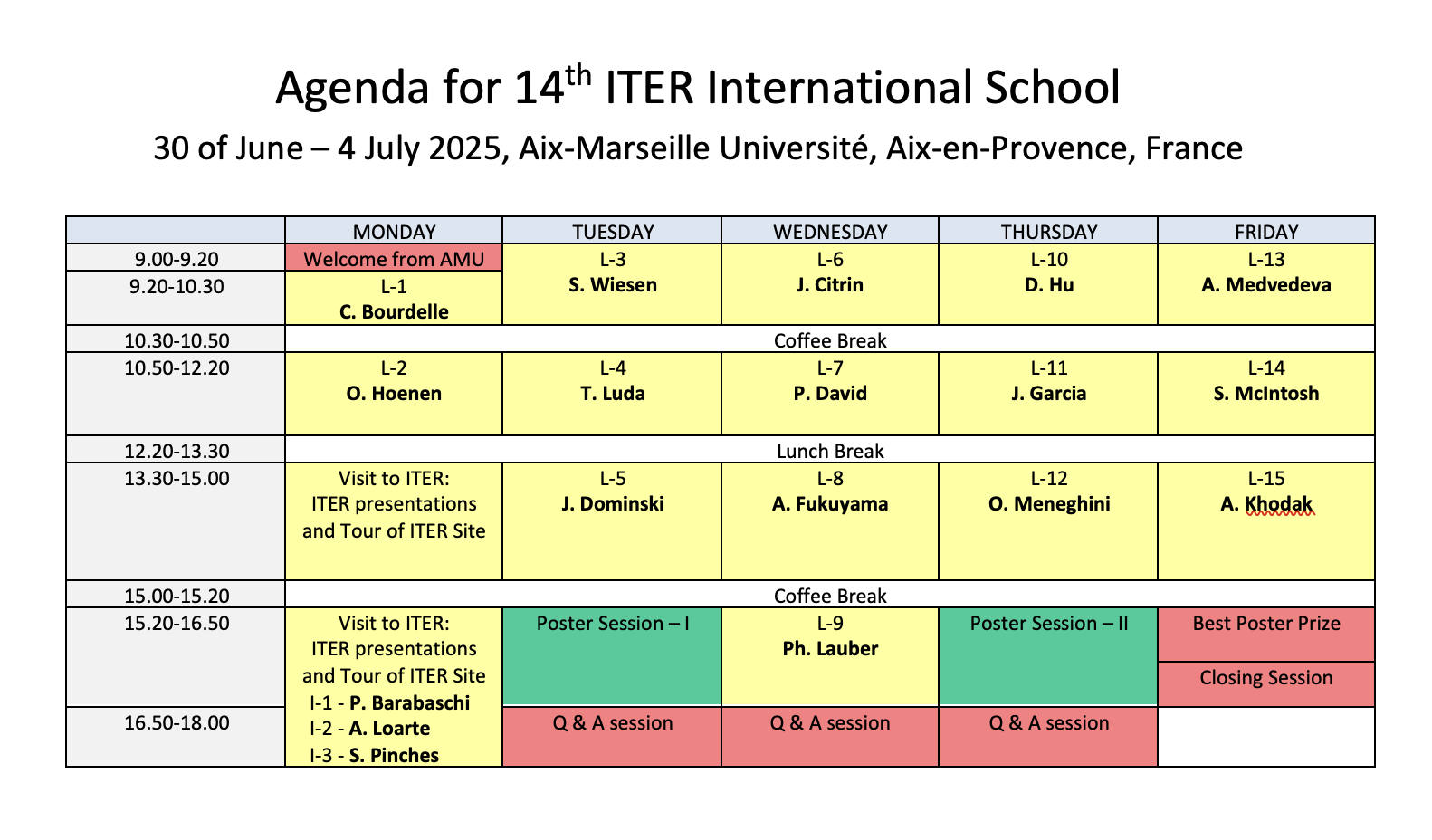
|
|
|
|
IIS Goal The ITER International School (IIS) aims to prepare young scientists and engineers for working in the field of nuclear fusion and research applications associated with the ITER project. The school format reflects the necessity of training future professionals on a wide range of interdisciplinary subjects, equipping them with a broad understanding of the skills required to contribute effectively to ITER’s success. School's Topic The subject of the 2025 school is "Integrated modelling of magnetic fusion plasmas", with a scientific program coordinated by Xavier Litaudon (CEA) and Alberto Loarte (ITER Organization).  Normalized profile of plasma radiation (in logarithmic scale with respect to its average value) across the cross-section of an ITER deuterium-tritium (DT) high-Q plasma modelled with JINTRAC. The asymmetry of the radiation profile in the core is caused by the centrifugal effect of rotation on the density of tungsten in the plasma for the expected Mach number of ~ 0.15 in ITER. Normalized profile of plasma radiation (in logarithmic scale with respect to its average value) across the cross-section of an ITER deuterium-tritium (DT) high-Q plasma modelled with JINTRAC. The asymmetry of the radiation profile in the core is caused by the centrifugal effect of rotation on the density of tungsten in the plasma for the expected Mach number of ~ 0.15 in ITER.
Reliable predictions of ITER plasmas—spanning the entire cross-section from the plasma core and scrape-off layer (SOL) to the material surface—are critical for achieving ITER’s fusion power demonstration goals. Such predictions are indispensable for defining and preparing plasma operational scenarios, analyzing the plasma pulses planned for ITER, and evaluating required control schemes via simulations of measurements, actuators, and plasma responses. Given the strongly nonlinear coupling of the processes that govern the behavior of burning plasmas, modeling individual processes or plasma regions in an isolated fashion is not sufficient. A holistic, integrated approach is therefore mandatory. The 2025 school will address these needs by exploring the integrated modeling capabilities and validation aspects on existing facilities, which is necessary to prepare ITER’s operation and to support ITER’s broader scientific objectives.
School PosterProgam About The first ITER School was organized in Aix-en-Provence, France, in 2007 and focused on turbulent transport in fusion plasmas. Twelve successive schools have followed on a variety of subjects.
|
|||||||||||||||||||||||||||||



